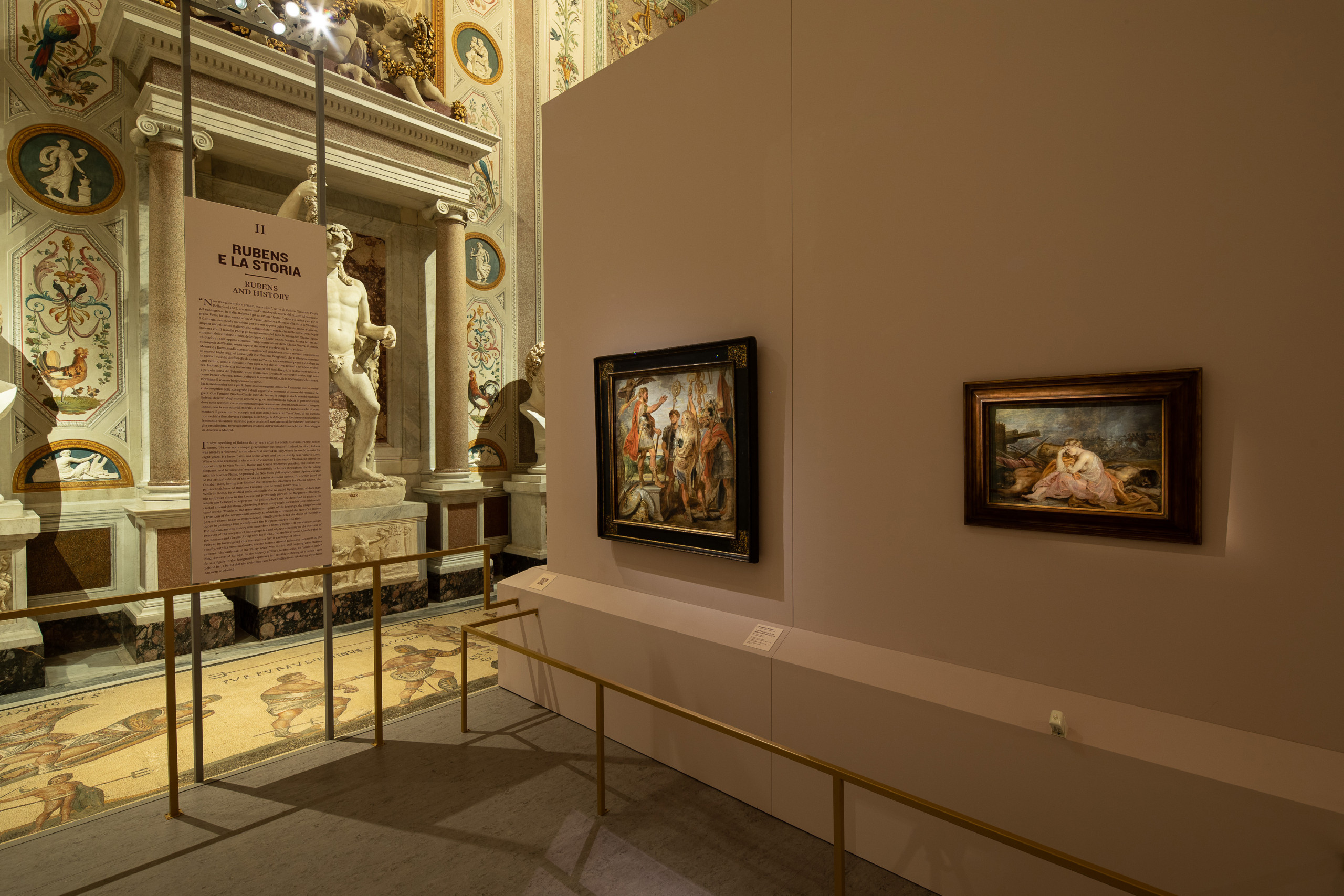RUBENS AND HISTORY

In 1672, speaking of Rubens thirty years after his death, Giovanni Pietro Bellori wrote, “He was not a simple practitioner but erudite”. Indeed, in 1600, Rubens was already a “learned” artist when first arrived in Italy, where he would remain for eight years. He knew Latin and some Greek and had probably read Vasari’s Lives. When he was received in the court of Vincenzo I Gonzaga in Mantua, he seized the opportunity to visit Venice, Rome and Genoa whenever possible. His Italian was eloquent, and he used the language beautifully in letters throughout his life. Along with his brother Philip, he praised the Neo-Stoic philosopher Justus Lipsius, curator of the critical edition of the works of Lucius Annaeus Seneca. In a letter dated 28 October 1608, having just finished the impressive altarpiece for Chiesa Nuova, the painter took leave of Italy, not knowing that he would never return.
While in Rome, he studied enthusiastically the so-called Dying Seneca, a black marble sculpture (now in the Louvre but previously part of the Borghese collection), which was believed to represent the philosopher’s suicide described in Tacitus. He circled around the statue, observing it from every angle, as was his habit with sculptural works. Thanks to the translation into print of his drawings, the image became a true icon of the seventeenth century, to which he attributed the face of an ancient portrait known today as Pseudo-Seneca. Finally, he depicted the death of the philosopher in paintings that transformed the Borghese marble into flesh.
For Rubens, ancient history was more than a literary subject. It was also a constant exercise of the exegesis of iconographies and objects attesting to the customs of the Romans and Greeks. Along with his friend, the erudite Nicolas-Claude Fabri de Peiresc, he investigated this material in a fertile exchange of ideas.
Finally, with its moral authority, ancient history allowed Rubens to comment on the present. The outbreak of the Thirty Years’ War in 1618, still ongoing when Rubens died, devastated Europe. In the Allegory of War Liechtenstein, an,“ancient-style” female figure in the foreground expresses her terrible suffering as a battle rages behind her, a battle that the artist may even have studied from life.